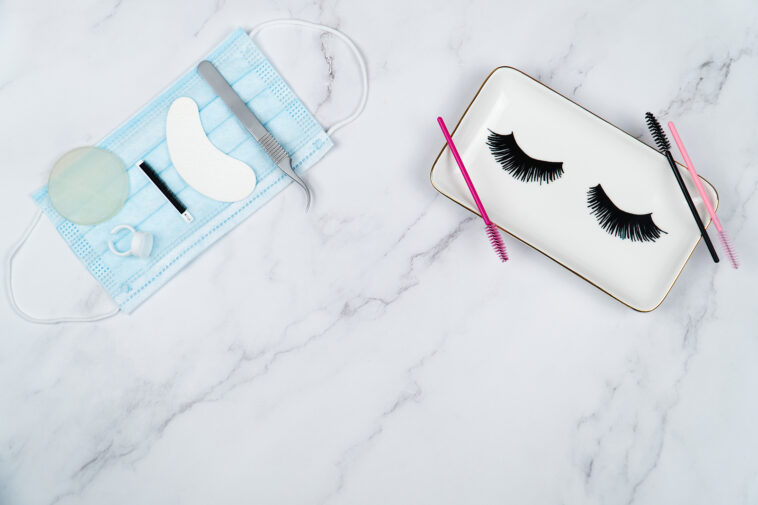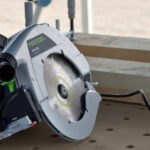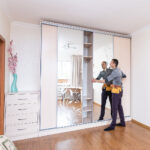Are DIY Lash Extensions Safe
Lash extensions have seen an extraordinary surge in popularity in recent years as they provide individuals with the allure of long, fluttery lashes without the need for mascara or lash curlers. However, the financial cost and upkeep associated with professional lash extensions have led to the emergence of DIY lash extension kits as an alternative.
The pressing question remains: Are DIY lash extensions safe? In this comprehensive guide, we will delve extensively into the intricacies of this beauty trend. We will explore both the potential risks and best practices linked to DIY lash extensions, ensuring that you are well-informed before embarking on this journey.
The Growing Popularity of DIY Lash Extensions
To truly comprehend the allure of DIY lash extensions, it's imperative to dissect the factors that have driven their rise in popularity:
Cost-Effective Beauty Solutions
Professional lash extensions often come with a hefty price tag, encompassing not just the initial application cost but also the ongoing expense of regular refills every few weeks. In contrast, DIY kits are generally more budget-friendly, making the dream of long, luscious lashes more accessible to a broader audience.
Convenient Home Application
One of the most significant advantages of DIY lash extensions is the unparalleled convenience they offer. These kits empower individuals to apply extensions from the comfort of their own homes, eliminating the need for frequent salon appointments and the associated time and travel costs. The flexibility to choose when and where to apply lash extensions is a compelling factor for many.
Customization and Creative Freedom
DIY lash extension kits grant users the power to customize their lash length, style, and density according to their personal preferences. This creative freedom allows for experimentation with different looks, providing a level of versatility that traditional mascara or strip lashes cannot match. Whether you desire a natural look or bold, dramatic lashes, DIY kits offer the tools to achieve your desired aesthetic.
Flexibility for Experimentation
The ability to experiment with various lash styles without a long-term commitment is another factor fueling the popularity of DIY lash extensions. Unlike permanent extensions, which necessitate professional removal, DIY options allow for easy removal and adjustment. This flexibility caters to ever-changing beauty trends and individual preferences, making it a preferred choice for those who crave versatility.
While these advantages make DIY lash extensions an attractive option, it is crucial to acknowledge the potential risks and safety precautions associated with their use.
Check out our post on Best DIY Lash Extensions
Understanding the Risks of DIY Lash Extensions
Before diving into the best practices for safe DIY lash extensions, it is essential to be fully aware of the potential risks involved:
Eye Irritation and Allergies
One of the most significant concerns when using DIY lash extensions is the potential for eye irritation and allergic reactions. Adhesives and lash materials may contain ingredients that can cause discomfort, redness, itching, or even allergic dermatitis. It is crucial to carefully read product labels, paying close attention to ingredient lists, and performing a patch test before full application to identify any potential sensitivities.
Damage to Natural Lashes
Improper application and removal of DIY lash extensions can lead to damage to your natural lashes. Extensions that are too heavy or applied too close to the lash line can cause your natural lashes to weaken, break, or even fall out. Long-term use of heavy extensions can also strain the hair follicles, potentially leading to permanent lash loss.
Risk of Infection
If the application process is not executed with proper hygiene and cleanliness, it can increase the risk of eye infections. The eye area is sensitive, and improper handling can introduce bacteria, leading to redness, swelling, or more severe infections like conjunctivitis.
Uneven Application
Achieving a symmetrical and well-balanced look with DIY lash extensions can be challenging, especially for those without prior experience. Uneven application can result in an unnatural appearance, which may be difficult to rectify without professional help. This can impact not only aesthetics but also comfort and overall satisfaction with the results.
Difficulty in Safe Removal
Removing DIY lash extensions can be a daunting task and may result in lash damage if not done correctly. Pulling or tugging on the extensions can lead to the loss of your natural lashes, creating a cycle of damage that can be difficult to break. Safe and gentle removal is paramount to preserving the health of your natural lashes.
With a clear understanding of the potential risks associated with DIY lash extensions, let's delve into the best practices and safety measures to ensure a positive and safe experience.
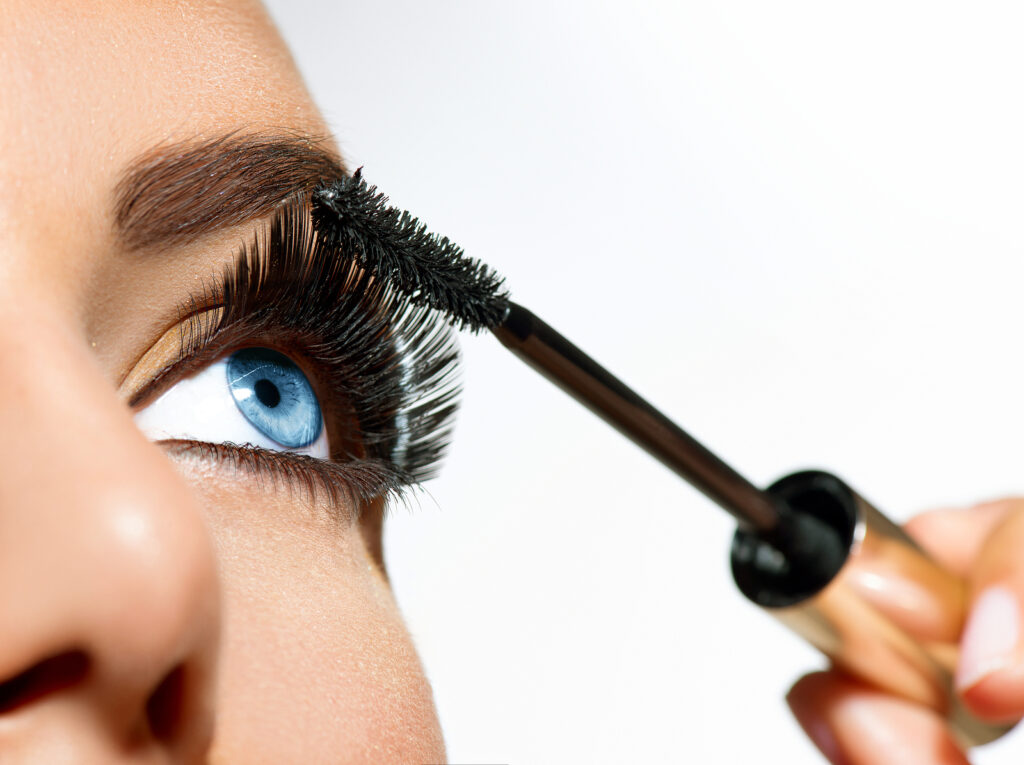
Best Practices for Safe DIY Lash Extensions
To enjoy the benefits of DIY lash extensions while minimizing the associated risks, it is crucial to adhere to the following best practices:
Conduct Thorough Research
Before purchasing a DIY lash extension kit, embark on a journey of comprehensive research. Dive deep into the brand and specific product you plan to use. Look for customer reviews and testimonials to gauge user experiences. Additionally, check whether the product and manufacturer are certified and reputable. This diligence will ensure that you choose a kit that prioritizes safety and quality.
Perform a Patch Test
To assess the suitability of the adhesive and lash materials for your skin and eyes, always perform a patch test. Apply a small amount of adhesive or lash material to a less sensitive area of your skin, such as your forearm or behind your ear, and wait for 24 hours to monitor any adverse reactions. This step can help identify potential allergies or sensitivities before applying the extensions to your lashes, preventing discomfort and potential complications.
Prioritize Cleanliness and Hygiene
Maintaining strict cleanliness and hygiene during the application process is non-negotiable. To minimize the risk of infection and ensure a safe DIY lash extension experience, follow these key hygiene practices:
- Wash your hands thoroughly before handling any lash extension materials. Clean hands are the first line of defense against contamination.
- Ensure that all tools and surfaces used for the application are clean and sanitized. This includes tweezers, brushes, and any other equipment you will use.
- Work in a well-lit and well-ventilated environment to minimize the risk of contamination from airborne particles. Adequate lighting is essential for precise application.
- Avoid touching your face or eyes with unwashed hands during the application process. This habit can introduce bacteria and compromise the safety of the procedure.
Carefully Follow Kit Instructions
Each DIY lash extension kit may come with specific application and removal instructions. It is essential to read and follow these instructions meticulously. Deviating from the recommended procedures can increase the likelihood of complications and damage to your natural lashes. Kit instructions are designed to ensure both safety and optimal results.
Use the Right Amount of Glue
Excessive use of adhesive can lead to clumping, discomfort, and a less natural appearance. Achieving the right balance is crucial. Use a small, precise amount of adhesive when attaching each lash extension. Avoid applying glue directly to your natural lashes' roots, as this can weigh them down and lead to damage over time.
Precise Placement
Ensure that you place the lash extensions at an appropriate distance from your eyelid and avoid attaching them too close to your natural lashes' roots. Proper placement not only enhances comfort but also reduces the risk of damage and discomfort. Precision is key to achieving a natural and flattering look.
Regular Maintenance
If you choose to keep your DIY lash extensions for an extended period, practicing regular maintenance is essential. This not only ensures the longevity of your extensions but also contributes to the overall health of your natural lashes. Here are some maintenance tips:
- Gently clean your lash extensions with a lash extension-safe cleanser or foam cleanser to remove dirt, oil, and makeup. Keeping your extensions clean enhances their appearance and prevents buildup.
- Avoid using oil-based skincare products around your eyes, as these can weaken the adhesive bond and cause premature lash extension loss. Opt for oil-free alternatives to maintain the integrity of the extensions.
- Brush your lash extensions regularly with a clean mascara wand or a designated lash brush. This helps prevent tangling and maintains their appearance, ensuring that they remain beautifully separated and voluminous.
Gentle Removal
When it is time to remove your DIY lash extensions, exercise patience and caution. Follow these steps for safe and gentle removal:
- Purchase a specialized lash extension adhesive remover recommended by the kit manufacturer. These removers are designed to dissolve the adhesive gently and effectively without causing damage to your natural lashes.
- Apply a small amount of adhesive remover to a cotton swab or microfiber brush, ensuring that it is applied precisely to the base of the lash extensions. Be careful to avoid contact with your skin or eyes.
- Wait for the adhesive remover to work its magic, typically for 5-10 minutes, as per the product's instructions. This allows the adhesive to soften and loosen its grip on the extensions.
- Once the adhesive has sufficiently dissolved, use a clean, lint-free applicator or tweezers to carefully slide off the extensions. Start from the outer corners and work your way inward. Be patient and avoid tugging or pulling, as this can damage your natural lashes.
- After removing the extensions, cleanse your lashes and eyelids to ensure that no adhesive residue remains. This step contributes to the health and comfort of your natural lashes.
Check out our post on DIY Lash Lift
DIY Lash Extension Kit Selection
To ensure a safe and satisfying experience with DIY lash extensions, selecting the right kit is of paramount importance. Let's delve into this critical aspect in more detail.
Choosing a Reputable Brand
Begin your journey by researching and selecting a reputable brand that specializes in DIY lash extension kits. A well-established brand is more likely to prioritize safety and quality in its products. Look for companies with positive reviews and a track record of delivering reliable lash extension kits.
Ingredients and Allergen Information
Examine the ingredient list of your chosen DIY lash extension kit meticulously. Look for kits that provide clear information about the ingredients used in their adhesive and lash materials. This transparency is essential, especially if you have known allergies or sensitivities. Opt for kits that are free from harsh chemicals and allergens to minimize the risk of adverse reactions.
Lash Material Options
Consider the type of lash materials offered by the kit. DIY lash extensions come in various materials, including synthetic, mink, silk, and even real human hair. Each material offers distinct characteristics in terms of appearance and feel. Select the material that aligns with your desired look and comfort level.
Kit Inclusions and Extras
Pay attention to what the DIY lash extension kit includes. Kits typically contain lash extensions, adhesive, tweezers, and sometimes additional accessories. Evaluate whether the kit provides everything you need for the application process or if you'll need to purchase extra items separately. Comprehensive kits can simplify the process for beginners.
Price Point
While budget-friendly options are attractive, be cautious of kits that seem too good to be true at a significantly lower price point. Quality materials and safety standards come at a cost. Striking a balance between affordability and quality is crucial for a successful DIY lash extension experience.
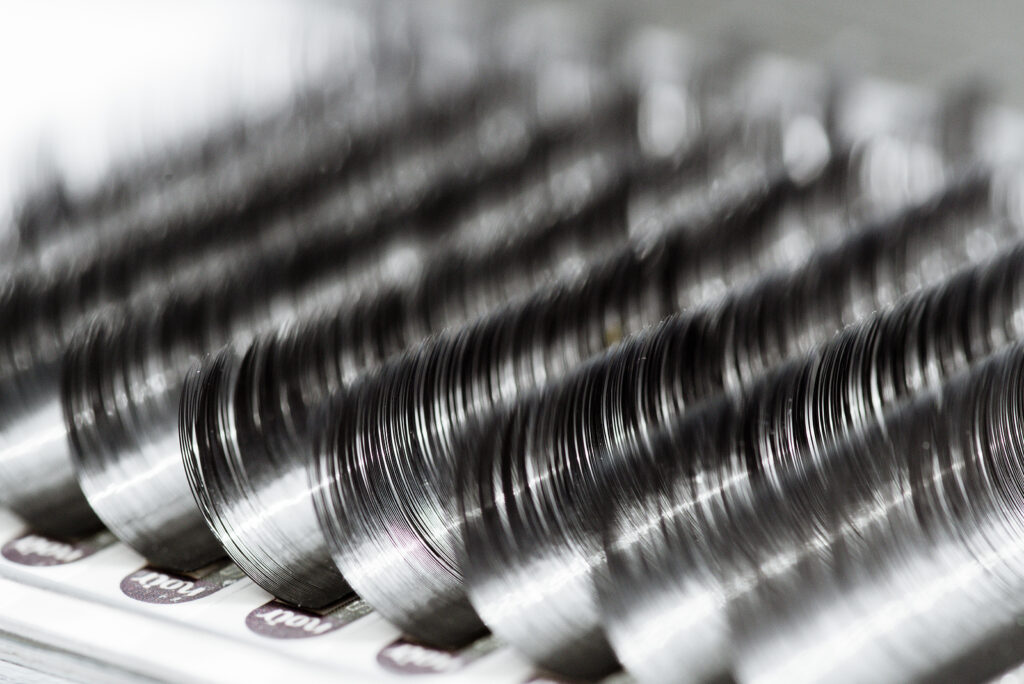
DIY Lash Extension Maintenance
Maintaining your DIY lash extensions is key to ensuring their longevity and your overall satisfaction. Let's explore the crucial aspects of lash extension maintenance.
Gentle Cleaning Routine
To keep your lash extensions looking pristine, establish a gentle cleaning routine. Use a lash extension-safe cleanser or foam cleanser to remove dirt, oil, and makeup. Regular cleaning prevents the buildup of debris, extending the life of your extensions.
Avoiding Oil-Based Products
Steer clear of oil-based skincare products around your eye area. Oil can weaken the adhesive bond, leading to premature lash extension loss. Opt for oil-free alternatives for makeup removal, moisturizing, and cleansing to preserve the integrity of your extensions.
Lash Brushing
Regularly brushing your lash extensions with a clean mascara wand or a specialized lash brush helps prevent tangling and maintains their appearance. Gently separate and fluff your lashes to ensure they remain beautifully separated and voluminous.
Refrain from Excessive Touching
Minimize touching or rubbing your eyes, as excessive contact can dislodge the extensions. It's crucial to be mindful of your lashes, especially when applying makeup or removing eye makeup. Light and careful movements around your eye area are recommended.
Scheduled Refills
Keep in mind that DIY lash extensions have a finite lifespan. As your natural lashes shed, the extensions may also fall out. To maintain a full look, consider scheduling regular refills every few weeks or as recommended by the kit manufacturer. Consistent upkeep ensures that your lashes continue to look their best.
DIY Lash Extensions vs. Professional Application
While DIY lash extensions offer convenience and cost savings, it's essential to compare them with professional lash extensions to make an informed decision.
Professional Expertise
Professional lash technicians undergo extensive training to ensure precise and safe application. They have experience in assessing your unique eye shape and choosing the right extensions for a customized look. Their expertise minimizes the risk of uneven application and potential damage.
Sanitary Salon Environment
Salons provide a controlled and sanitary environment for lash extension application. Professional lash technicians follow strict hygiene protocols, reducing the risk of infection. DIY applications at home may not always meet the same hygiene standards.
Customization
Both DIY and professional lash extensions offer customization, but professionals can provide more intricate and tailored designs. If you desire a specific, intricate look or have complex preferences, professional technicians can deliver a higher level of customization.
Time and Commitment
Consider your time and commitment when choosing between DIY and professional lash extensions. DIY kits offer flexibility, but they also require a learning curve and regular maintenance. Professional extensions provide a more hands-off experience, requiring fewer ongoing efforts on your part.
Cost Comparison
Evaluate the overall cost of DIY lash extensions versus professional application. While DIY kits may seem more budget-friendly initially, factoring in ongoing maintenance and potential mishaps may lead to a cost-effective balance when opting for professional extensions.
The Role of Adhesives in DIY Lash Extensions
Adhesives play a crucial role in the application of DIY lash extensions. Understanding the different types and their significance can enhance your safety and satisfaction.
Types of Lash Extension Adhesives
There are primarily two types of lash extension adhesives: cyanoacrylate and medical-grade. Cyanoacrylate adhesives are commonly used for lash extensions and are safe when applied correctly. Medical-grade adhesives offer a higher level of safety and are suitable for sensitive eyes.
Drying Time and Bond Strength
Adhesive drying time can vary among different products. Some offer rapid drying, while others require a bit more time. Understanding the drying time of your chosen adhesive is crucial for precise application. Additionally, consider the bond strength of the adhesive, as it determines how well the extensions adhere to your natural lashes.
Allergic Reactions
Allergic reactions to lash extension adhesives are rare but possible. Pay attention to your skin's response during the patch test and initial application. If you experience itching, redness, or discomfort, discontinue use immediately and consult a professional or dermatologist for guidance.
Adhesive Safety Measures
When working with lash extension adhesive, take safety precautions seriously. Always use adhesive in a well-ventilated area to avoid inhaling fumes. Additionally, wear protective gear like gloves and eye protection if recommended by the kit instructions or adhesive manufacturer.
Adhesive Removers
Invest in a high-quality adhesive remover designed specifically for lash extensions. Adhesive removers ensure safe and gentle removal without causing damage to your natural lashes. Avoid using generic or harsh removers that may lead to lash breakage or discomfort.
Alternative Options to DIY Lash Extensions
While DIY lash extensions are an enticing option, there are alternative ways to achieve luscious lashes that may better suit your preferences and safety concerns.
Magnetic Lashes
Magnetic lashes have gained popularity as a hassle-free alternative to traditional lash extensions. These lashes feature small magnets that adhere to your natural lashes, eliminating the need for adhesive. They are easy to apply, remove, and reposition without the potential risks associated with glue.
Eyelash Serums
Eyelash serums are a non-invasive option to enhance lash length and thickness naturally. These serums typically contain peptides and vitamins that promote lash growth and strength. With consistent use, eyelash serums can yield impressive results over time.
Temporary Lash Solutions
Consider temporary lash solutions, such as strip lashes or individual flare lashes. These options provide the benefit of customization and dramatic looks without the commitment or potential risks of semi-permanent extensions. Strip lashes, in particular, are easy to apply and remove for special occasions or everyday wear.
Professional Consultation
If you're unsure about the safety and suitability of DIY lash extensions or alternative options, consult with a professional lash technician or dermatologist. They can assess your specific needs, address your concerns, and recommend the most suitable lash enhancement solution tailored to your eye health and beauty goals.
Conclusion
In conclusion, DIY lash extensions offer a cost-effective and convenient means of achieving longer and fuller lashes, making them an appealing option for many beauty enthusiasts. However, it is crucial to approach DIY lash extensions with a thorough understanding of the potential risks involved, including eye irritation, damage to natural lashes, infection, uneven application, and difficulties in safe removal.
To maximize safety and enjoyment when using DIY lash extensions, prioritize research, perform patch tests, maintain impeccable cleanliness and hygiene, adhere to kit instructions, use the appropriate amount of glue, ensure precise placement, practice regular maintenance, and execute gentle removal when necessary.
Always remember that your eye health and safety should remain paramount when exploring beauty trends like DIY lash extensions. By following the extensive best practices outlined in this guide, you can embrace the allure of beautiful lashes while minimizing the associated risks, ensuring a safe and satisfying experience.
Sources
https://www.rmlashandbeauty.com/diy-eyelash-extensions/
https://www.ncbi.nlm.nih.gov/pmc/articles/PMC7345203/
https://www.thebrainyinsights.com/report/diy-eyelash-extension-market-12728


